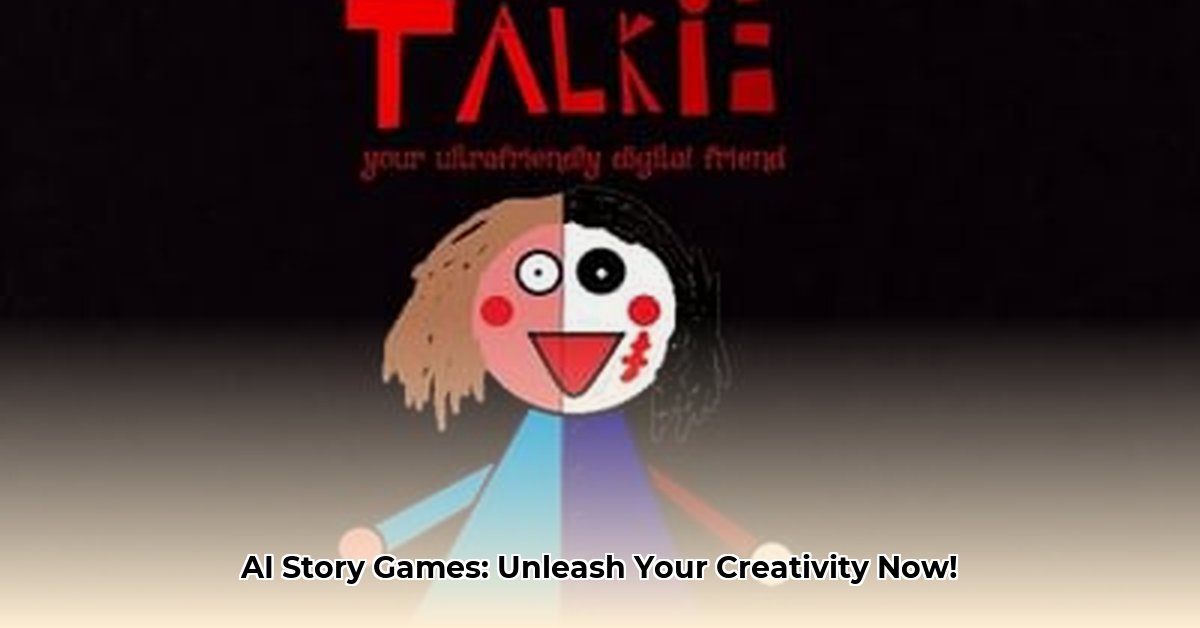
Talkie games represent a revolutionary leap in interactive storytelling, blending artificial intelligence (AI), dynamic narratives, and player agency to create uniquely personalized experiences. These aren't simple choose-your-own-adventure games; they are sophisticated conversations between player and AI, where every decision ripples through the narrative, shaping characters, plot, and conclusion. While still a burgeoning field, talkie games promise a future of deeply immersive and personalized entertainment. This article explores their inner workings, creative potential, and the steps to creating your own.
How Talkie Games Work: The AI Engine
At the heart of a talkie game is a sophisticated AI engine. This engine processes player input—whether text-based choices or voice commands—and dynamically generates responses and story branches. Unlike linear narratives, talkie games offer genuinely branching storylines, creating a unique experience for each playthrough. The AI interprets player choices, adapting character interactions, plot points, and sometimes even visual elements to reflect those choices. For example, choosing a confrontational approach in an interrogation might lead to different clues than a more subtle approach, resulting in entirely different narrative paths. The key is the AI's capacity for real-time response and adaptation, making the experience feel truly organic and responsive.
Character Development: Dynamic Personalities
Compelling characters are the backbone of any great story, and in talkie games, AI plays a crucial role in creating realistic and dynamic personalities. While developers create fundamental character traits, motivations, and backstories, the AI allows characters to evolve and react authentically to player actions. A consistently kind approach to a gruff character might soften their demeanor over time, revealing a previously hidden compassion. Conversely, hostile interactions could harden their resolve or lead to unforeseen conflicts. This organic evolution creates believable character arcs that deeply engage players and foster a stronger emotional connection to the virtual world.
User Engagement: Interactive Mechanisms and Measurement
Keeping players hooked requires a variety of engaging interaction mechanisms. Basic talkie games rely on text-based choices, but more advanced games use voice commands, resulting in a more natural and immersive experience. Some even incorporate subtle cues like facial expressions or body language, further enhancing the sense of realism. However, the most effective approach remains a matter of ongoing research. A/B testing different interaction styles—comparing subtle hints to direct commands, for example—can reveal optimal levels of player control without compromising narrative integrity. Measuring key metrics like completion rates, user satisfaction, and play time is vital in perfecting the interactive elements and ensuring maximum player engagement.
The Future of Talkie Games: Challenges and Opportunities
The future of talkie games is bright, with advancements promising even more sophisticated AI, intuitive interfaces, and potentially even brain-computer interfaces for unprecedented levels of immersion. We can anticipate more realistic character interactions, complex, branching narratives driven by nuanced player choices, and virtual worlds that feel truly responsive and alive.
However, this technological advancement introduces ethical considerations. The potential for AI to influence player choices raises concerns about manipulation and responsible game design. Maintaining player agency, ensuring genuine player control over the experience, is paramount. Data privacy is also a key concern, requiring careful management of user data for personalization without compromising privacy. These challenges necessitate thoughtful and responsible development practices.
Creating Your Own Talkie Game: A Practical Guide
Creating your own talkie game seems daunting, but it's achievable, especially starting with smaller projects. Many platforms offer user-friendly tools for beginners.
Step-by-Step Guide:
- Choose Your Tools: Select a user-friendly platform or game engine appropriate to your skill level. Tools like Twine or Ink provide excellent starting points for text-based adventures. (Consider your technical expertise before committing to a complex engine).
- Develop Your Narrative: Begin with a basic plot outline, key characters, and their motivations. Focus on a core narrative concept before expanding.
- Design Interactions: Determine how players influence the story—text, voice, or a blend. Start simple, focusing on core mechanics before adding complexities.
- Integrate AI: Explore AI tools and libraries for natural language processing (NLP) to handle player interactions and generate dialogue. Many platforms now offer simplified integration options.
- Test and Refine: Thorough playtesting and iteration are crucial. Gather feedback and make adjustments based on player experiences.
Conclusion: The Interactive Future of Storytelling
Talkie games represent a powerful convergence of technology and storytelling, forging a new era of interactive narratives. By skillfully blending AI, dynamic narratives, and engaging interaction mechanisms, these games offer immersive experiences unlike any other. While challenges remain, the potential for creative expression and personalized entertainment is vast, promising a future where players truly shape the stories they experience.
⭐⭐⭐⭐☆ (4.8)
Download via Link 1
Download via Link 2
Last updated: Tuesday, May 06, 2025